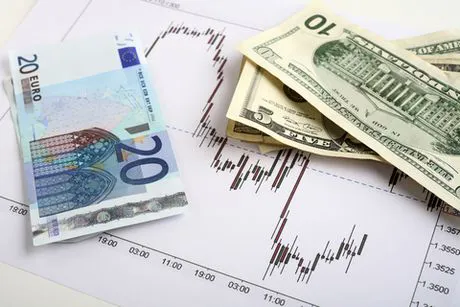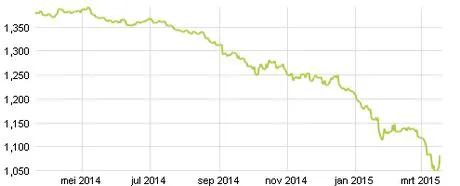Already in January, before the ECB started its large-scale buying of government bonds, Peruvian banana exporters voiced their concerns regarding the Euro. Aingeru García, manager of APPBOSA, announced a decrease of the export to Europe this year. While 92% of the products were shipped to Europe last year, Aingeru expects to export 75% of the products to Europe this year. This decrease was expected, despite the higher estimate of 850,000 boxes this year.

Big influence
At Israeli exporter Arava, the exchange rate developments are closely monitored. “A large part of our revenue is strongly influenced by the devaluation of the Euro,” says Omer Kamp. “These developments aren’t positive for us, but that’s the market in which we operate.” The devaluation of the Euro is an important aspect for Arava. The company is considering several solutions to this problem, including a Currency Bar, a financial solution in which a fixed exchange rate is agreed upon with the bank, but price increases are also being considered.
Changing demand
A South African exporter says that increasingly often, the influence of the exchange rate is included in the invoice, which means income is the same as last year. “We’re also seeing that, because of higher yields on other markets, more is being exported to these destinations,” the South African exporter says. “That saturates these markets, which eventually puts prices under pressure.” According to this exporter, supply and demand have a bigger influence on the global market than exchange rates. “Exchange rates influence demand in the short term.”

The Euro has devalued since the summer 2014. source: www.wisselkoers.nl
“Demand itself is influenced by many factors, one of which is the devaluation of the Euro,” says Omer Kamp. “In practice, our logistical costs, which largely account for the value of a product, are calculated in American dollars, but our sales are in Euro.” That causes tension for the exporters, with revenue turning out lower than costs. “We have to evaluate each product separately, and decide whether a price increase is necessary or not.”
Focus on dollar markets
Most of Arava’s customers are European companies. “Just like other exporters, in order to absorb the consequences of the devaluation, we will be forced to look for new markets outside the Eurozone,” says Omer Kamp. “However, this won’t have any consequences for our European clients.” New markets for Arava include the United States, Canada, South Africa and Hong Kong.
Earlier this month, Fernando Sat, chairman of the Chilean Table Grape Committee, said that prices in Europe are disappointing, partly due to the Euro’s decreasing exchange rate, and that the American market offers more opportunities. “Prices on the American market have remained stable, despite the large volume. The prices are better than in Europe, where high demands are set regarding special packaging and larger agrochemical residues. Producers are not compensated for these additional costs,” Fernando says.
South Africa is also looking at new destinations. “As a company, we’re looking to diversify our market share, to also profit from the short upturns in demand regarding exchange rate fluctuations. The focus in our company is a bit more on the dollar markets than in previous years.”
